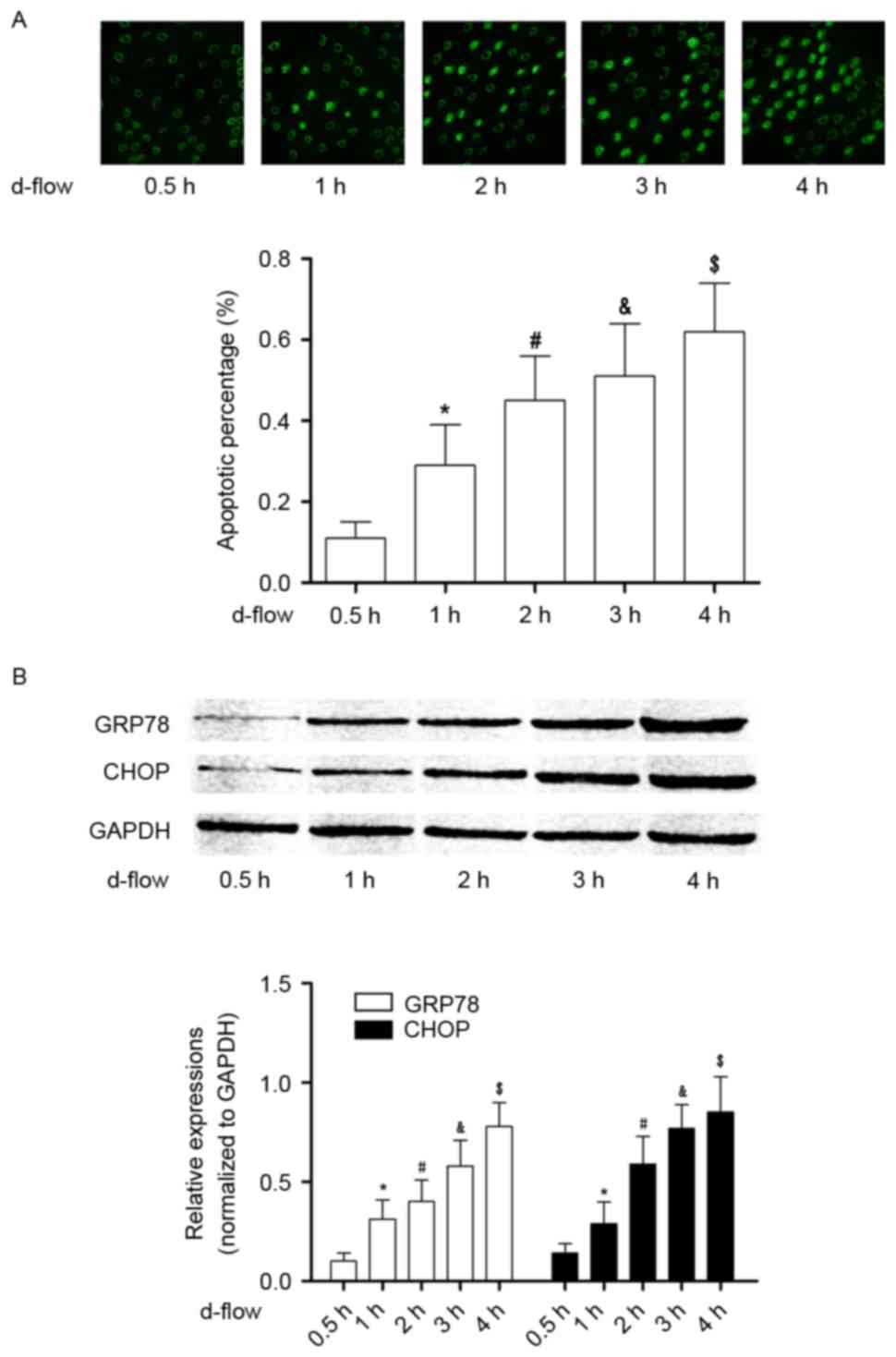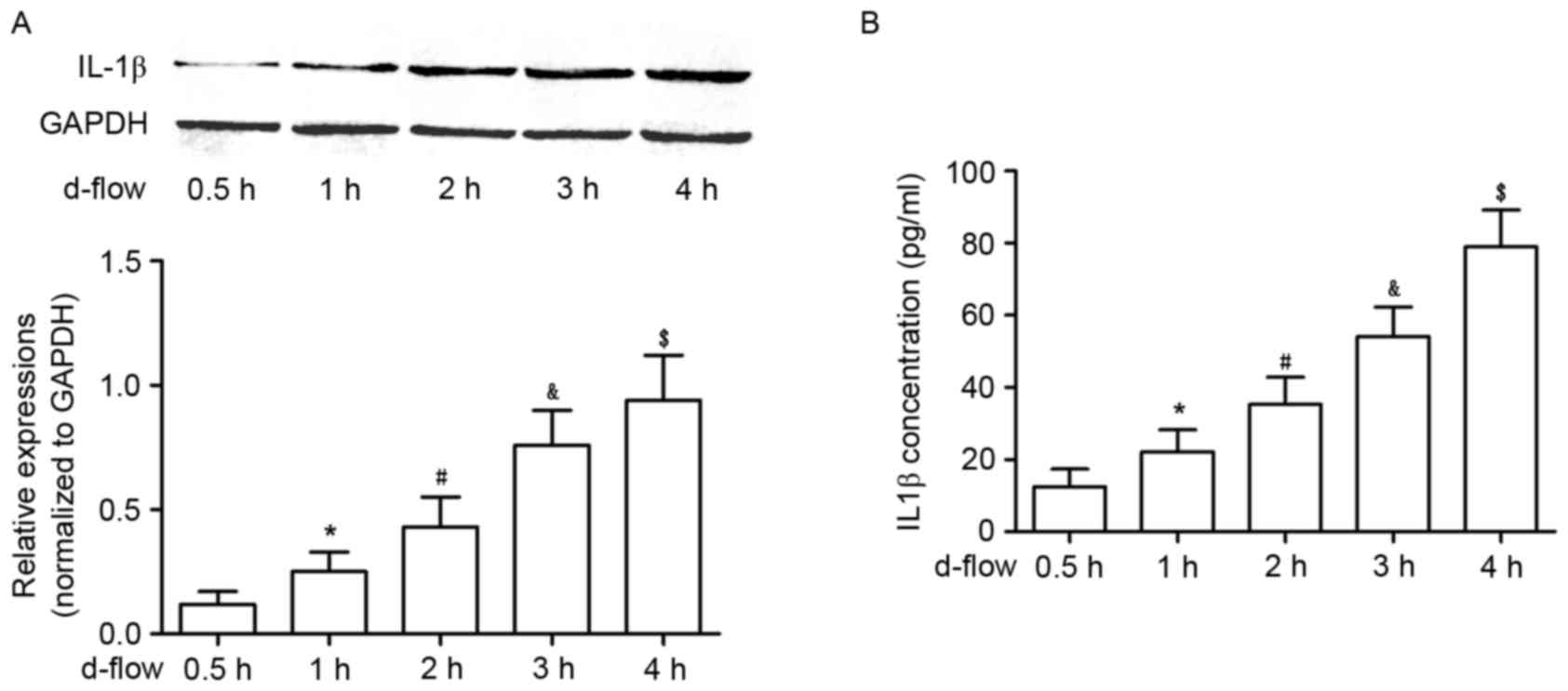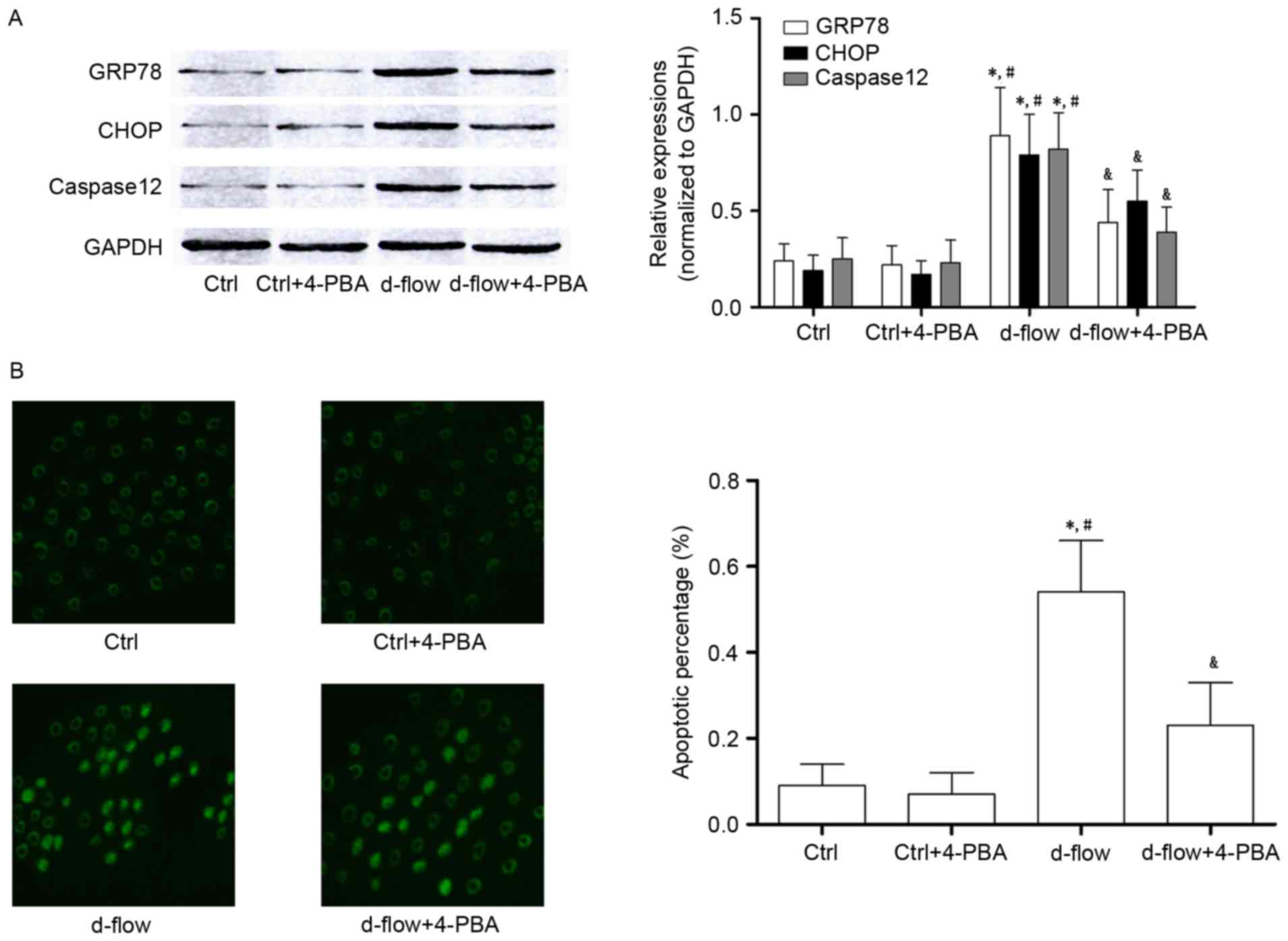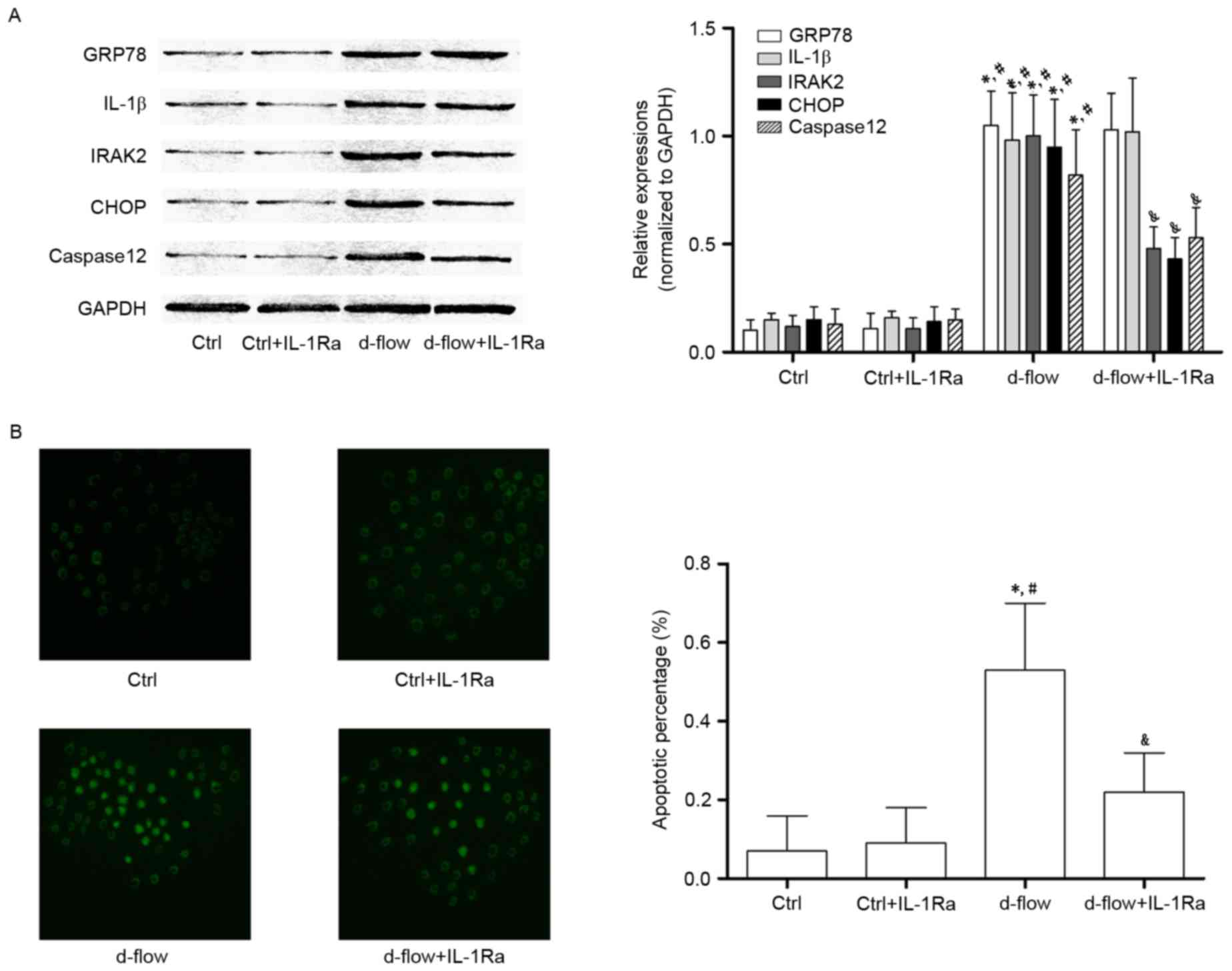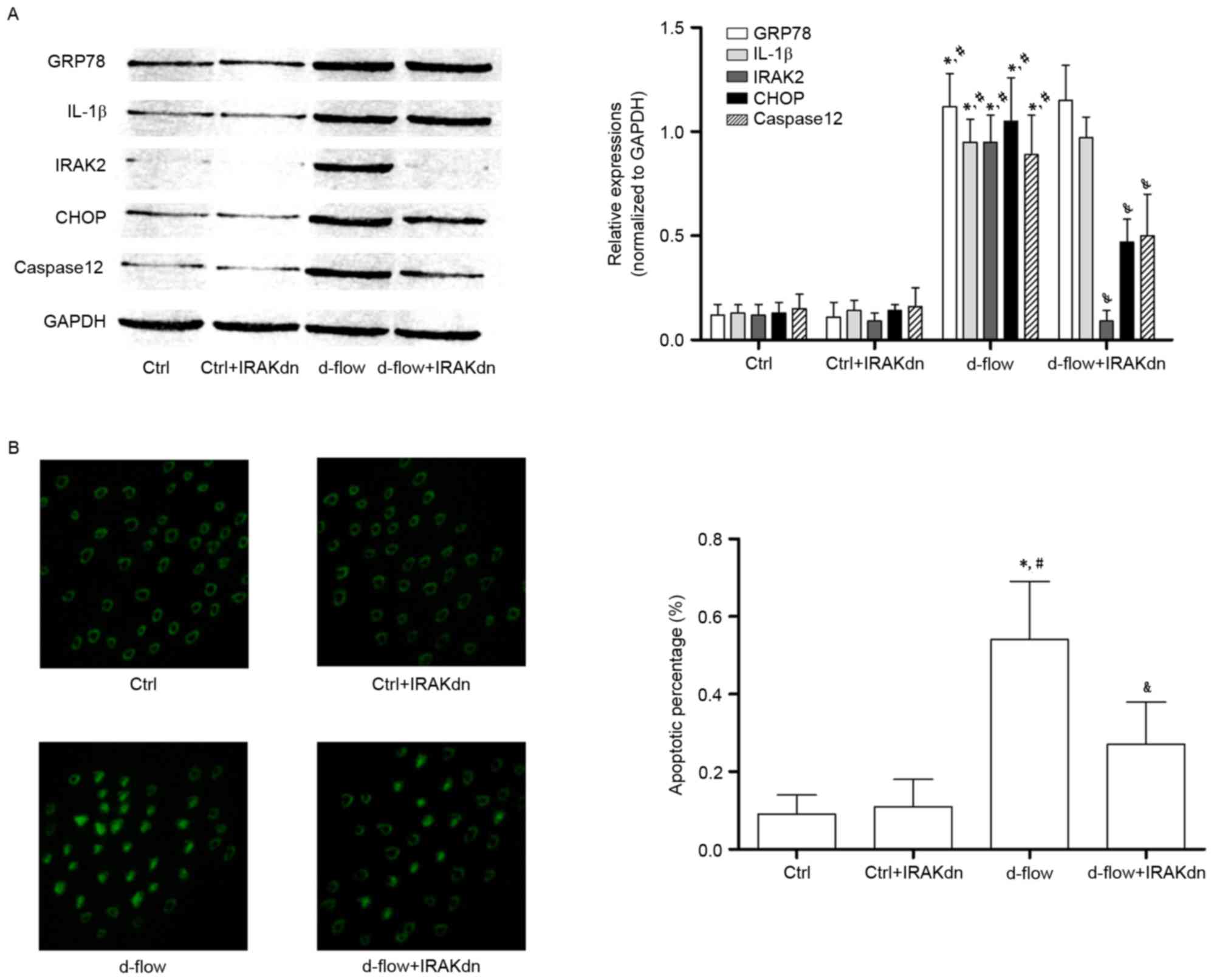|
1
|
Gimbrone MA Jr and García-Cardeña G:
Vascular endothelium, hemodynamics, and the pathobiology of
atherosclerosis. Cardiovasc Pathol. 22:9–15. 2013. View Article : Google Scholar : PubMed/NCBI
|
|
2
|
Heo KS, Le NT, Cushman HJ, Giancursio CJ,
Chang E, Woo CH, Sullivan MA, Taunton J, Yeh ET, Fujiwara K and Abe
J: Disturbed flow-activated p90RSK kinase accelerates
atherosclerosis by inhibiting SENP2 function. J Clin Invest.
125:1299–1310. 2015. View
Article : Google Scholar : PubMed/NCBI
|
|
3
|
Xu Q: Disturbed flow-enhanced endothelial
turnover in atherosclerosis. Trends Cardiovasc Med. 19:191–195.
2009. View Article : Google Scholar : PubMed/NCBI
|
|
4
|
Heo KS, Fujiwara K and Abe J:
Disturbed-flow-mediated vascular reactive oxygen species induce
endothelial dysfunction. Circ J. 75:2722–2730. 2011. View Article : Google Scholar : PubMed/NCBI
|
|
5
|
van der Heiden K, Hierck BP, Krams R, de
Crom R, Cheng C, Baiker M, Pourquie MJ, Alkemade FE, DeRuiter MC,
Gittenberger-de Groot AC and Poelmann RE: Endothelial primary cilia
in areas of disturbed flow are at the base of atherosclerosis.
Atherosclerosis. 196:542–550. 2008. View Article : Google Scholar : PubMed/NCBI
|
|
6
|
Hida A, Kawakami A, Miyashita T, Yamasaki
S, Nakashima K, Tanaka F, Izumi Y, Tamai M, Huang M, Ida H, et al:
Nitric oxide acts on the mitochondria and protects human
endothelial cells from apoptosis. J Lab Clin Med. 144:148–155.
2004. View Article : Google Scholar : PubMed/NCBI
|
|
7
|
Qiu ZL, Zhang JP and Guo XC: Endoplasmic
reticulum stress and vascular endothelial cell apoptosis. Zhongguo
Yi Xue Ke Xue Yuan Xue Bao. 36:102–107. 2014.(In Chinese).
PubMed/NCBI
|
|
8
|
Skurk C and Walsh K: Death receptor
induced apoptosis: A new mechanism of homocysteine-mediated
endothelial cell cytotoxicity. Hypertension. 43:1168–1170. 2004.
View Article : Google Scholar : PubMed/NCBI
|
|
9
|
Pluquet O, Pourtier A and Abbadie C: The
unfolded protein response and cellular senescence. A review in the
theme: Cellular mechanisms of endoplasmic reticulum stress
signaling in health and disease. Am J Physiol Cell Physiol.
308:C415–C425. 2015. View Article : Google Scholar : PubMed/NCBI
|
|
10
|
Ma J, Qiu Y, Yang L, Peng L, Xia Z, Hou
LN, Fang C, Qi H and Chen HZ: Desipramine induces apoptosis in rat
glioma cells via endoplasmic reticulum stress-dependent CHOP
pathway. J Neurooncol. 101:41–48. 2011. View Article : Google Scholar : PubMed/NCBI
|
|
11
|
Lakshmanan AP, Thandavarayan RA,
Palaniyandi SS, Sari FR, Meilei H, Giridharan VV, Soetikno V,
Suzuki K, Kodama M and Watanabe K: Modulation of
AT-1R/CHOP-JNK-Caspase12 pathway by olmesartan treatment attenuates
ER stress-induced renal apoptosis in streptozotocin-induced
diabetic mice. Eur J Pharm Sci. 44:627–634. 2011.PubMed/NCBI
|
|
12
|
Nakagawa T, Zhu H, Morishima N, Li E, Xu
J, Yankner BA and Yuan J: Caspase-12 mediates
endoplasmic-reticulum-specific apoptosis and cytotoxicity by
amyloid-beta. Nature. 403:98–103. 2000. View Article : Google Scholar : PubMed/NCBI
|
|
13
|
Davies PF and Civelek M: Endoplasmic
reticulum stress, redox, and a proinflammatory environment in
athero-susceptible endothelium in vivo at sites of complex
hemodynamic shear stress. Antioxid Redox Signal. 15:1427–1432.
2011. View Article : Google Scholar : PubMed/NCBI
|
|
14
|
Bäck M, Weber C and Lutgens E: Regulation
of atherosclerotic plaque inflammation. J Intern Med. 278:462–482.
2015. View Article : Google Scholar : PubMed/NCBI
|
|
15
|
Dewberry R, Holden H, Crossman D and
Francis S: Interleukin-1 receptor antagonist expression in human
endothelial cells and atherosclerosis. Arterioscler Thromb Vasc
Biol. 20:2394–2400. 2000. View Article : Google Scholar : PubMed/NCBI
|
|
16
|
Balato A, Di Caprio R, Canta L, Mattii M,
Lembo S, Raimondo A, Schiattarella M, Balato N and Ayala F: IL-33
is regulated by TNF-α in normal and psoriatic skin. Arch Dermatol
Res. 306:299–304. 2014. View Article : Google Scholar : PubMed/NCBI
|
|
17
|
Mattii M, Ayala F, Balato N, Filotico R,
Lembo S, Schiattarella M, Patruno C, Marone G and Balato A: The
balance between pro- and anti-inflammatory cytokines is crucial in
human allergic contact dermatitis pathogenesis: The role of IL-1
family members. Exp Dermatol. 22:813–819. 2013. View Article : Google Scholar : PubMed/NCBI
|
|
18
|
Liu Z, Zhao N, Zhu H, Zhu S, Pan S, Xu J,
Zhang X, Zhang Y and Wang J: Circulating interleukin-1β promotes
endoplasmic reticulum stress-induced myocytes apoptosis in diabetic
cardiomyopathy via interleukin-1 receptor-associated kinase-2.
Cardiovasc Diabetol. 14:1252015. View Article : Google Scholar : PubMed/NCBI
|
|
19
|
Reinhart-King CA, Fujiwara K and Berk BC:
Physiologic stress-mediated signaling in the endothelium. Methods
Enzymol. 443:25–44. 2008. View Article : Google Scholar : PubMed/NCBI
|
|
20
|
Heo KS, Fujiwara K and Abe J: Shear stress
and atherosclerosis. Mol Cells. 37:435–440. 2014. View Article : Google Scholar : PubMed/NCBI
|
|
21
|
Davies PF, Civelek M, Fang Y, Guerraty MA
and Passerini AG: Endothelial heterogeneity associated with
regional athero-susceptibility and adaptation to disturbed blood
flow in vivo. Semin Thromb Hemost. 36:265–275. 2010. View Article : Google Scholar : PubMed/NCBI
|
|
22
|
Zhang T, Tian F, Wang J, Jing J, Zhou SS
and Chen YD: Atherosclerosis-associated endothelial cell apoptosis
by MiR-429-mediated down regulation of Bcl-2. Cell Physiol Biochem.
37:1421–1430. 2015. View Article : Google Scholar : PubMed/NCBI
|
|
23
|
Zeng L, Zampetaki A, Margariti A, Pepe AE,
Alam S, Martin D, Xiao Q, Wang W, Jin ZG, Cockerill G, et al:
Sustained activation of XBP1 splicing leads to endothelial
apoptosis and atherosclerosis development in response to disturbed
flow. Proc Natl Acad Sci USA. 106:8326–8331. 2009; View Article : Google Scholar : PubMed/NCBI
|
|
24
|
Choy JC, Granville DJ, Hunt DW and McManus
BM: Endothelial cell apoptosis: Biochemical characteristics and
potential implications for atherosclerosis. J Mol Cell Cardiol.
33:1673–1690. 2001. View Article : Google Scholar : PubMed/NCBI
|
|
25
|
Cao SS and Kaufman RJ: Endoplasmic
reticulum stress and oxidative stress in cell fate decision and
human disease. Antioxid Redox Signal. 21:396–413. 2014. View Article : Google Scholar : PubMed/NCBI
|
|
26
|
Hotamisligil GS: Endoplasmic reticulum
stress and atherosclerosis. Nat Med. 16:396–399. 2010. View Article : Google Scholar : PubMed/NCBI
|
|
27
|
Tabas I: The role of endoplasmic reticulum
stress in the progression of atherosclerosis. Circ Res.
107:839–850. 2010. View Article : Google Scholar : PubMed/NCBI
|
|
28
|
Ivanova EA and Orekhov AN: The role of
endoplasmic reticulum stress and unfolded protein response in
atherosclerosis. Int J Mol Sci. 17:pii:E1932016. View Article : Google Scholar
|
|
29
|
Lu JP, Li X, Jin YL and Chen MX:
Endoplasmic reticulum stress-mediated aldosterone-induced apoptosis
in vascular endothelial cells. J Huazhong Univ Sci Technolog Med
Sci. 34:821–824. 2014. View Article : Google Scholar : PubMed/NCBI
|
|
30
|
Krams R, Segers D, Gourabi B Mousavi, Maat
W, Cheng C, van Pelt C, van Damme LC, de Feyter P, Van Der Steen T,
de Korte CL and Serruys PW: Inflammation and atherosclerosis:
Mechanisms underlying vulnerable plaque. J Interv Cardiol.
16:107–113. 2003. View Article : Google Scholar : PubMed/NCBI
|
|
31
|
Dong Z, Zhou J, Zhang Y, Chen Y, Yang Z,
Huang G, Chen Y, Yuan Z, Peng Y and Cao T: Astragaloside-IV
alleviates Heat-induced inflammation by inhibiting endoplasmic
reticulum stress and autophagy. Cell Physiol Biochem. 42:824–837.
2017. View Article : Google Scholar : PubMed/NCBI
|
|
32
|
Benosman S, Ravanan P, Correa RG, Hou YC,
Yu M, Gulen MF, Li X, Thomas J, Cuddy M, Matsuzawa Y, et al:
Interleukin-1 receptor-associated kinase-2 (IRAK2) is a critical
mediator of endoplasmic reticulum (ER) stress signaling. PLoS One.
8:e642562013. View Article : Google Scholar : PubMed/NCBI
|
|
33
|
Cenni V, Sirri A, De Pol A, Maraldi NM and
Marmiroli S: Interleukin-1-receptor-associated kinase 2
(IRAK2)-mediated interleukin-1-dependent nuclear factor kappaB
transactivation in Saos2 cells requires the Akt/protein kinase B
kinase. Biochem J. 376:303–311. 2003. View Article : Google Scholar : PubMed/NCBI
|
|
34
|
Meng Q, Zheng M, Liu H, Song C, Zhang W,
Yan J, Qin L and Liu X: TRAF6 regulates proliferation, apoptosis,
and invasion of osteosarcoma cell. Mol Cell Biochem. 371:177–186.
2012. View Article : Google Scholar : PubMed/NCBI
|



